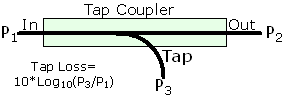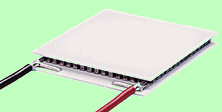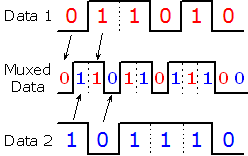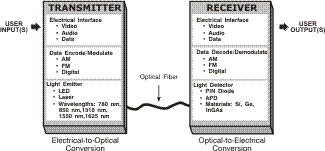| T:
Abbreviation for tera. One trillion or 1012. |
| T1:
In telecommunications, the cable used to transport DS1 service. |
|
Tap Loss:
In a fiber optic
coupler,
the ratio of power at the tap port to the power at the input port.
|

|
|
Tap Port:
In a
coupler
where the
splitting ratio
between output ports is not equal, the output port containing the lesser
power. |
| T-Carrier: Generic designator for any of
several digitally multiplexed telecommunications carrier systems. |
|
TCP/IP:
Abbreviation for
transmission control protocol/Internet protocol. Two interrelated
protocols that are part of the
Internet protocol suite. TCP operates on
the OSI transport layer and breaks data into packets. IP operates on the
OSI network layer and routes packets. Originally developed by the U.S.
Department of Defense. |
| TDM:
See
time-division multiplexing.
|
|
TDMA:
See time-division
multiple access. |
|
TEC:
Abbreviation for thermoelectric cooler. A device used to dissipate heat
in electronic assemblies by pumping heat from its hot face to its cold
face.. |

|
| Telecommunications
Management Network (TMN):
A
network that interfaces with a
telecommunications network at several points in order to receive
information from, and to control the operation of, the
telecommunications network.
|
|
Ternary:
A semiconductor compound made of three elements (e.g.,
GaAlAs).
|
| Thermal
Noise:
Noise resulting from thermally
induced random fluctuation in current in the
receiver’s load resistance. |
|
Throughput Loss:
In a fiber optic coupler, the ratio of power at the
throughput port to the power at the input port. |
|
Throughput Port: In a coupler where the
splitting ratio between output ports is not
equal, the output port containing the greater power. |
| TICL:
Abbreviation for temperature induced cable loss. Optical loss as a
result of extreme temperatures outside a fiber optic
cable’s environmental specifications. |
| Tight-Buffer:
A material tightly surrounding a fiber in a cable, holding it rigidly in place. |

|
|
Time-Division
Multiplexing
(TDM):
A transmission
technique whereby several low-speed channels are multiplexed into a
high-speed channel for transmission. Each low-speed channel is allocated
a specific position based on time. |

|
| Time-Division
Multiple Access (TDMA): A communications technique
that uses a common channel (multipoint or broadcast) for
communications among multiple users by allocating unique time slots to
each user. Used extensively in satellite systems, local area
networks, physical security systems, and
combat-net radio systems. |
|
TMN:
See telecommunications
management network. |
| Token Ring: A ring-based network scheme in
which a token is used to control access to a
network. Used by IEEE 802.5 and
FDDI.
|
| Total Internal Reflection:
The reflection that occurs when
light strikes an interface at an angle of incidence (with respect to the
normal) greater than the
critical angle. |
|
Transceiver:
A device that performs, within one chassis, both
telecommunication transmitting and receiving functions. |
|
Transducer:
A device that converts energy from one form to another, such as
optical energy to electrical energy. |
| Transmitter:
A device that includes a source and driving electronics. It functions as an
electrical-to-optical converter. |

|
|
Transponder:
The part of a satellite that receives and transmits a signal. |
| Tree:
In communications networks, a physical topology consisting of a
hierarchy of master-slave connections between a
concentrator and other FDDI nodes (including subordinate
concentrators). |
| Trunk:
1) In a communications network, a single transmission channel
between two switching centers or nodes, or both. 2) A circuit between
switchboards or other switching equipment, as distinguished from
circuits which extend between central office switching equipment and
information origination/termination equipment. Trunks may be used to
interconnect switches, such as major, minor, public and private
switches, to form networks. |
| TTL:
Abbreviation for transistor-transistor logic. An
old logic family.
|
|
Twisted Pair (TP) Cable:
A cable made up of one or more separately
insulated twisted wire pairs, none of which is arranged with another to
form quads. |